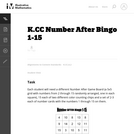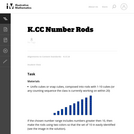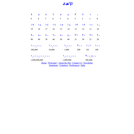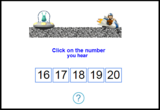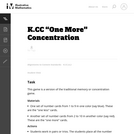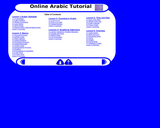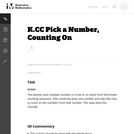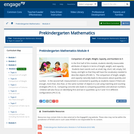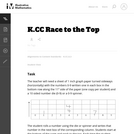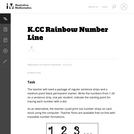
(Nota: Esta es una traducción de un recurso educativo abierto creado por el Departamento de Educación del Estado de Nueva York (NYSED) como parte del proyecto "EngageNY" en 2013. Aunque el recurso real fue traducido por personas, la siguiente descripción se tradujo del inglés original usando Google Translate para ayudar a los usuarios potenciales a decidir si se adapta a sus necesidades y puede contener errores gramaticales o lingüísticos. La descripción original en inglés también se proporciona a continuación.)
Módulo 1 del plan de estudios de jardín de infantes en una historia de unidades. En los temas A y B, las actividades de clasificación permiten a los estudiantes analizar y observar su mundo y articular sus observaciones. El razonamiento y el diálogo comienzan de inmediato. En los temas C, D, E y F, los estudiantes ordenan, cuentan y escriben hasta diez objetos para responder cuántas preguntas de lineal, a matriz, circular y finalmente a configuraciones dispersas en las que deben idear una ruta a través de los objetos como cuentan. En los temas G y H, los estudiantes usan su comprensión de las relaciones entre los números y saben que cada nombre de número sucesivo se refiere a una cantidad que es una mayor y que el número anterior es uno menos.
English Description:
Module 1 of the Kindergarten curriculum in A Story of Units. In Topics A and B, classification activities allow students to analyze and observe their world and articulate their observations. Reasoning and dialogue begin immediately. In Topics C, D, E, and F, students order, count, and write up to ten objects to answer how many? questions from linear, to array, to circular, and finally to scattered configurations wherein they must devise a path through the objects as they count. In Topics G and H, students use their understanding of relationships between numbers and know that each successive number name refers to a quantity that is one greater and that the number before is one less.
- Subject:
- Mathematics
- Numbers and Operations
- Material Type:
- Module
- Provider:
- New York State Education Department
- Provider Set:
- EngageNY
- Date Added:
- 05/11/2013
